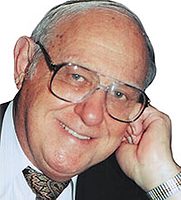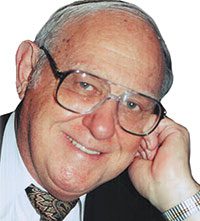Enrich Your family, Not the IRS
Sometimes, strategies are secrets because few professionals know they exist.

Joe, a long-time reader of this column, and the owner of a family business (Success Co.) hired a new CPA (Claude) about one year ago. At one of their meetings, Joe showed Claude a thick file of this column's articles, which he has been saving for years.
Claude studied the articles, then Claude said, “Let’s call Irv.”
They did.
The following is a summary of the strategies, taken from the articles, used by Joe (age 76, married to Mary, age 67) and Claude. In a way, the strategies are secrets, because few professionals know they exist, and if they do, have no idea how to implement them.
Strategy No. 1 (tax-free wealth)
The myth that if you no longer make out-of-pocket payments to the insurance company means you no longer pay premiums.
First, burn this fact into your mind: If you have built up enough cash surrender value (CSV) in one or more policies on your life (or spouse’s or second-to-die) so you are no longer paying cash premiums to the insurance company, sorry, you are still paying premiums (coming out of your CSV).
An example of what to do: Joe and Mary had four policies with a combined CSV of $1.485 million and a death benefit of $2.04 million. They no longer paid cash premiums on any of the policies.
My insurance guru was able to replace the existing policies (using a tax-free exchange) with new policies totaling $2.9 million (in death benefits) — a 42 percent guaranteed increase. Not one penny in cash premiums, now, or in the future. Works 100 percent of the time. (Note: Sometimes the best insurance strategy is to dump the old single life policies and buy new second-to-die policies. Joe and Mary could have acquired a $3.65 million second-to-die policy (all taxes paid in full, using only their $1.485 million CSV). Wow!
Lesson learned: OK, if you are a reader of this column who owns one (or more policies) with a large CSV, say $200,000 or more, take a moment and give me a call. You’ll be delighted at the tax-free possibilities in increased wealth (without cost).
Strategy No. 2
A comprehensive estate plan (CEP), guaranteed to help every family business owner:
A CEP is actually two plans:
1) The traditional A/B trust (often called the “family trust” and “marital trust”) with a pour-over will. Chances are all of you married guys, with a completed estate plan, already have this traditional plan in place. What you really have is a death plan. Sorry, it can’t save you even one dollar in estate taxes. Yet, it’s a good start.
But you also must have:
2) A lifetime plan. A lifetime plan contains a number of sub-strategies that allow you to totally conquer the estate tax and often use some strategies that invest a portion of your current wealth to fund the creation of significant additional wealth (that passes to your heirs — typically the kids and grandkids — tax-free).
The following are the most important sub-strategies (all lifetime planning) we implemented to save taxes (income taxes and estate taxes) while increasing Joe’s wealth:
• A family limited partnership (FLIP).
Transferred a little over $6 million of Joe’s investments (CDs, cash, stocks, bonds and real estate). Joe keeps absolute control by retaining one percent (all the voting rights) and 99 percent (called “limited units”), which he can gift to the kids and grandkids. The tax law allows about a 35 percent discount reducing the $6 million to $4 million for tax purposes (saves estate taxes on $2 million).
• Gifting program.
Every year, Joe will make the maximum gifts allowed ($14,000 for each child and grandchild for Joe, the same for Mary — $28,000 for the two of them).
• Management company.
Formed a separate management company (a C Corp) that is not related to Success Co. for tax purposes. Now, this new company can give fringe benefits to Joe and Sam (Joe's son works for Success Co.) without giving the same benefits to other employees of Success Co. For example, it makes 100 percent of medical expenses and long-term care deductible for the families of Joe and Sam. Total annual savings about $21,000.
• Sale of annuities to charity.
Joe had $850,000 of various annuities. As a practical matter, if kept to death (Joe’s prior intention), the annuities were really terrible insurance policies. Instead, we donated them to a charity, getting a $239,000 (according to IRS tables) charitable deduction.
Best of all, we are using the annual annuity payments received from the charity to pay for a $4 million second-to-die policy on Joe and Mary. Really a triple play:
1) The $850,000 out of Joe’s taxable estate;
2) a $239,000 charitable deduction; and
3) $4 million to Joe’s heirs – tax-free because the policy will be owned by an irrevocable life insurance trust.
Claude applauded.
And, finally, when Joe’s plan was done, the various lifetime strategies not only eliminated all of Joe’s potential estate tax, but the amount of wealth that his family will receive (because of the tax-free life insurance) will be significantly more than Joe’s current wealth. Joe, actually said, “COOL!”
One warning: The above plan summary does not discuss every nuance, tax trap, detail and possible exception. But if you work with an experienced and knowledgeable professional, each strategy and sub-strategy works exactly as described.
If you want more information on one or more of the strategies send me a fax (847-674-5299) or email (irv@irvblackman.com) with your name and all phone numbers where you can be reached: business, cell and home. Or, in a hurry, call me (Irv) at 847-674-5295.





